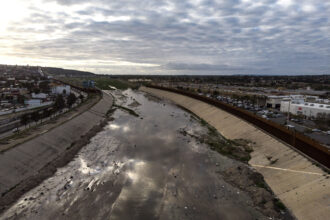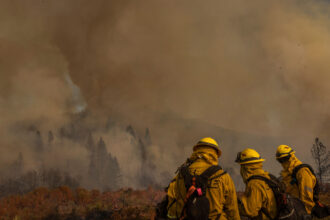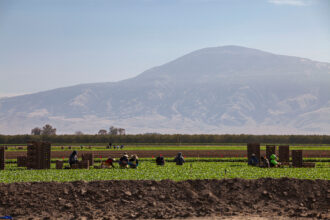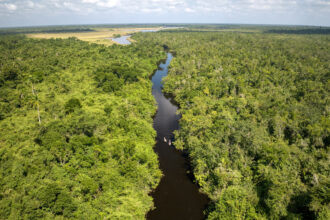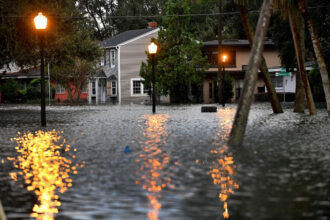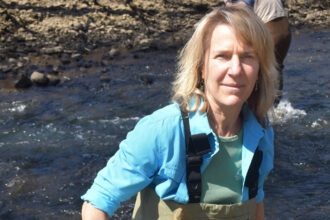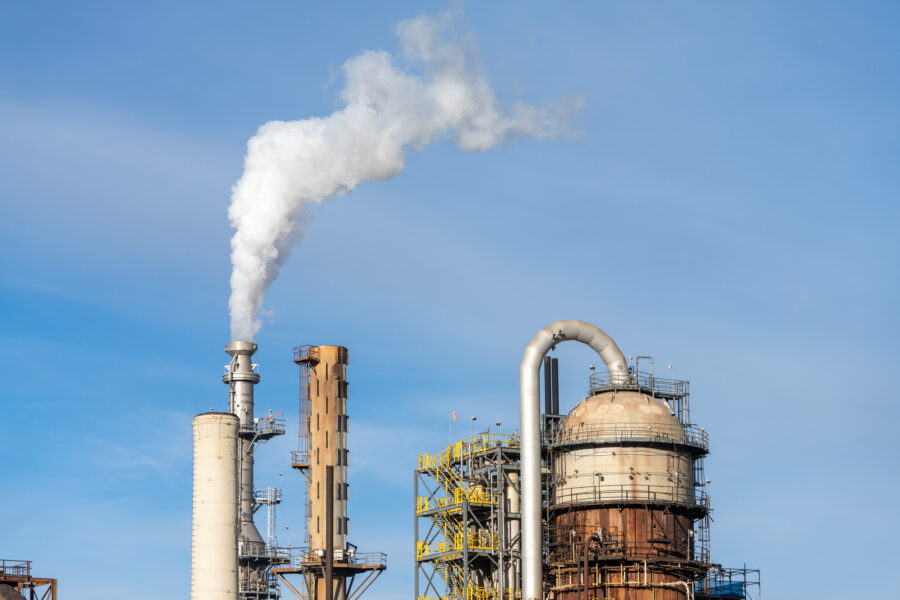Barbara Sattler is on a mission to transform the way nurses, physicians and the general public think about threats to health. For Sattler, a registered nurse, emerita professor of public health at the University of San Francisco and founding member of the international Alliance of Nurses for Healthy Environments, it starts with being able to describe what climate change is.
On Friday, at a summit hosted by another organization she helps run, California Nurses for Environmental Health and Justice, Sattler led a role-playing exercise to help her colleagues do just that. She invited nurses, physicians and scientists packed into a USF conference room in San Francisco to “give your elevator spiel” to your neighbor about what climate change is. She gave them just 90 seconds, then asked them to switch roles.
When she asked how many people had a “great deal of confidence” in describing climate change, just a few hands went up. After all, they’re trained health professionals, not climate scientists. But Sattler, who has long taught the connections between fossil fuels’ harmful planetary and human health effects, had a plan to boost their confidence.
She explained how increasing emissions of greenhouse gases, mostly from fossil fuels, after the Industrial Revolution created a blanket around the earth that allows the sun’s radiation to heat up the globe while impairing reflected heat’s ability to reach space. “And so over time, we are heating up.”
She offered an analogy that any health professional could relate to, based on the dangers of leaving children in cars.
“On a sunny day when it’s 80 degrees outside, within 10 minutes, it’s 99 degrees inside,” Sattler said. “We’ve all had this experience where we’ve gone shopping, of going back into our car, and it’s hot. That is what’s happening on Earth. It is getting hotter, because we’re not effectively reflecting excess heat.”
Human beings have a tiny temperature range before feeling uncomfortable, she said. “Go up just a couple of degrees, we start to feel crappy. One or two more degrees after that we start to have physiological changes. If we stay at 104 for a while, we’re in real trouble.”
“So what happens if the whole earth is now developing a fever?” she posed. “Think about all the biological organisms that have a range of temperature that they need to stay in in order to flourish. And that indeed is what’s happening.”
Sattler, a fellow of the American Academy of Nursing and former advisor to the U.S. Environmental Protection Agency’s Office of Child Health Protection, has worked with communities affected by oil and extraction, lead-based paint, toxic chemicals and Superfund sites.
Inside Climate News spoke to Sattler Saturday in San Francisco during the California Nurses for Environmental Health & Justice summit she co-organized to explore new roles for health professionals. This conversation has been edited for length and clarity.
You’ve been a leading voice in the international environmental health movement, raising awareness about the role health professionals can play in reducing environmental exposures. What led you to realize things in our environment are making us sick?
A lot of my initial work, this was in like the late ’70s, early ’80s, was understanding that our workers are awash in chemicals. This is long before understanding they’re also in everything we slather on our bodies and ingest.
(After getting a masters in public health) I went back to school and did occupational health and health policy as a combined doctorate. There, an opportunity came from a grant from the EPA to develop training centers for lead abatement workers, lead risk assessors, just on lead. And that’s when I learned not just about worker exposures to lead, but how many lead-poisoned kids we had in this country.
That evolved from lead to healthy homes, looking at what people were concerned about: asbestos, carbon monoxide, products in the home. Things started to expand until I saw there was this whole other world of toxic exposures not just that I don’t know about but no nurse knows about and pretty much no physicians know about. What they don’t know, they don’t teach.
So I started the first graduate program for nurses in environmental health. And we started the National Alliance of Nurses for Healthy Environments, and began to have as our mission the integration of environmental health into nursing education, practice, research and advocacy.
And about 15 years ago in Maryland we started to hear about this stuff called fracking. It was like, here’s a whole other set of exposures to learn about. In Pennsylvania we helped nurses write a position paper that called for the banning of fracking, which they didn’t do in Pennsylvania, but they did in New York, and they did in Maryland. We also got the American Nurses Association to take a position on fracking.
Yesterday, you gave a talk about the health risks of climate change in the context of multiple health issues, which you called a “polycrisis.” How does dealing with so many stressors at once affect our resilience to climate change?
You saw a perfect example in the nurse (who talked about the stress of dealing with the fallout of the disastrous Carr fire in 2018). She said, I’m an ER nurse. I have my child and other responsibilities, but I still have to take care of my emergency patients when they come in the next day. And now I’m being called to do shelter work too. Nurses are having our own polycrisis, just being nurses and moms. Then you think about folks who are just trying to figure out how to put food on the table. Then reading in the headlines or listening to the news and hearing that we’ve got an existential crisis. It’s no wonder everybody is over the top stressed.
California has experienced one record-breaking event after another—heat, drought, floods and fires—often with devastating impacts on people’s health and lives. But you’ve also talked about how climate change disrupts the social infrastructure and threatens social relationships. What did you mean by that?
Before COVID, our surgeon general, Vivek Murthy, was already seeing that we were socially isolated and feeling lonely. (Then) so many of the ways people were used to getting together, going to bowling alleys, going to bingo, those all ended for a couple of years, and many of them didn’t start again. And then you’ve got youth who, during certain periods of development must be socialized, they must be with each other, it’s so important to their growth and development. And they were missing that. And then they were depending on these handheld devices, their iPhones, iPads and so forth. And what we know is that the more engaged you are with those, the less engaged you feel in humanity, the more disaffected you feel. So all of this is going on at the same time that youth are very aware that they are being told their future, you know, sucks. That climate change will be an existential threat by 2050, or 2040, which is when these youth are going to be 20 or 30 years old.
In England, they recognize this loneliness issue, and their health and human services set up a commission on loneliness. It got funded to help build the social infrastructure in England, to help build these various things that we need in our communities that help pull us together and help allow us to meet and be with each other, not with an agenda, just to be with each other.
It’s recognizing that we have a problem, that we need to build the social infrastructure that is going to build our resilience and withstand what is just going to continue for the foreseeable future to be these compounding stressors on us.
Many people talk about climate change as a wicked problem, but it also seems to be exacerbating all the fissures in our social systems.
I consider climate change a multiplier effect for everything. We’ve got all these things happening, and then you put climate change on top of it. Consider the effects of heat. You’ve got all these already stressed out people, now put them in 105 (degree) temperatures. It’s not gonna make things better. The nurse who (lived through the Carr Fire) talked about how everybody takes their children’s artwork off the walls at the beginning of summer so it doesn’t burn. It’s heartbreaking. And I think these are the stories people need to understand. This is their way of being resilient to the fires. You sequester all your children’s artwork.
This story is funded by readers like you.
Our nonprofit newsroom provides award-winning climate coverage free of charge and advertising. We rely on donations from readers like you to keep going. Please donate now to support our work.
Donate NowScientists tell us we must urgently move away from fossil fuels to avoid even further catastrophes. You’ve talked about the need to take care of workers during the transition away from coal, oil and gas while recognizing that these industries underwrite essential public health services in some regions. How do we ensure the transition doesn’t leave these services, or workers, behind?
Places like Kern County understand if they lose that industry, they’re gonna lose their tax base. But we don’t have a state plan. And I think this shift is all of our responsibility. The victims in the path of the shift must be cared for. That includes the workers, obviously, who have powered us up for the last 100 years. They provided coal, fossil fuels, natural gas. That is how we got to today, and we’re still using their power. But now we need to shift the source of that power. And in doing that, we need to make sure we honor them and care for them, as they move to some other form of work.
And we need to recognize that it’s not just the oil worker, it’s all the little places that supported the oil workers in that area. We’ve got to take care of the whole community.
I did a climate change presentation for the Kern County public health nurses. And after doing this whole talk, I said let’s talk about transitioning. What must we do? And they were silent. Nobody could imagine it, because so many of their husbands and partners were involved in the oil industry.
But then one of them said, you know, in Kern, we’ve got the largest solar arrays of any county in the state. And that’s for renewable energy. And it started the conversation. It was like, oh, a first step has happened. We are making that shift, and then they could begin to talk about imagining what that different world would look like.
But when it was about, oh my God, my husband is gonna lose his job. If Chevron leaves, the tax base leaves, I lose my job as a nurse. Her job was to find women who had been trafficked, and get them into safer places, because there was a lot of trafficking going on in Bakersfield. “No one will take care of my women,” she said. That was the thought process there. And if we can say, OK, so how would you play this differently? What do we need to have happen here? I think that’s when you begin to have creativity, to let your imagination work.
And instead of shifting the taxes to a new industry, maybe we’re going to have to have some dedicated taxes for this transition. Maybe we’re going to have to tax different industries to help take care of the industries that are going away. I think my legislators in Sonoma County need to be responsible for the oil workers in LA and the oil workers in Kern. I think we collectively have benefited from their work. Now let’s take care of them.
You’ve covered a lot of somewhat depressing ways that climate change is exacerbating existing health threats. What gives you hope?
Well, after a day like today I’m both practically in tears half the time from the experiences and feeling like youth in arms gives me some hope. And I like to think about that arc, that long arc that eventually moves more towards justice also being about climate justice.







